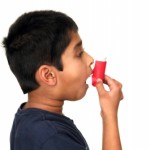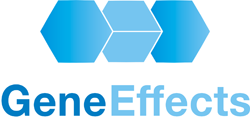 Asthma is caused by a combination of environmental ir genetic influences, but the specific factors are poorly understood. A significant “hit” detected in a genome-wide association scan (GWAS) for childhood asthma led a client to believe that one gene might be partially responsible. Proving that this genetic association really was causing asthma was, however, difficult. Firstly, no one knew the function of the protein made by the gene and secondly, changing genes in humans to test a hypothesis, rather than as therapy, is technically challenging & ethically questionable, especially in children. Fortunately, mice share about 90% of their genes with humans, so scientists “knocked-out” the equivalent gene, then tested whether these animals behaved like children with asthma. The short answer is – they didn’t. In lung-function tests that would have had asthmatics reaching for their inhalers, the knock-out mice were completely normalus. Taip, what was going on? Were mice not enough like humans? Was this the wrong gene?
Asthma is caused by a combination of environmental ir genetic influences, but the specific factors are poorly understood. A significant “hit” detected in a genome-wide association scan (GWAS) for childhood asthma led a client to believe that one gene might be partially responsible. Proving that this genetic association really was causing asthma was, however, difficult. Firstly, no one knew the function of the protein made by the gene and secondly, changing genes in humans to test a hypothesis, rather than as therapy, is technically challenging & ethically questionable, especially in children. Fortunately, mice share about 90% of their genes with humans, so scientists “knocked-out” the equivalent gene, then tested whether these animals behaved like children with asthma. The short answer is – they didn’t. In lung-function tests that would have had asthmatics reaching for their inhalers, the knock-out mice were completely normalus. Taip, what was going on? Were mice not enough like humans? Was this the wrong gene?
For this project, I went back to first principles – what was the evidence supporting the idea that this gene was responsible for increased asthma risk? Digging through the online literature, in particular papers from other groups studying the same gene and supplementary material not available in print, there were suggestions that the genetic effects were more complex. I found evidence that two other genes nearby were either more or less transcriptionally active in asthmatics and so might play a role in susceptibility to asthma. Furthermore, using data from the ENCODE project, I found that the regulatory element predicted to control these genes was conserved in mice, so it would be possible to test the predictions experimentally.
This suggested a novel therapeutic target – altering the activity of a cluster of genes, rather than just one, might alter disease risk.
